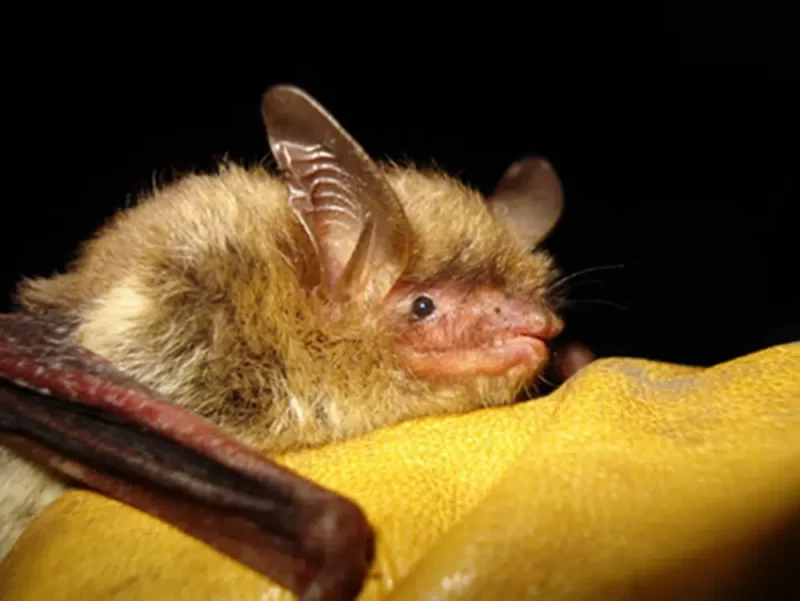Listing of bat as endangered will impact logging, road projects in northeastern Minnesota
The Biden administration declared the northern long-eared bat endangered this week in a last-ditch effort to save a species driven to the brink of extinction by white-nose syndrome, a fungal disease.
The listing of the bat as endangered will add additional regulation on things ranging from logging to highway construction projects in northeastern Minnesota. Officials from the U.S. Fish & Wildlife Service told WTIP this week that any additional restrictions on industry or local highway departments will be done in the best interest of the bats.
“The focus at this point is really on those surviving bats,” said Jill Utrup, a Minnesota-based researcher for the U.S. Fish and Wildlife Service. “And so doing everything in our power to make sure that we’re protecting those surviving bats.”
Congressman Pete Stauber, who represents Minnesota’s 8th District, adamantly opposed the changes that put the bat into the endangered category. In October, Stauber said, “State and local officials, and not the federal government, understand how to manage their wildlife populations.”
Before the changes were approved this week, Stauber said “new restrictions put forward by the Fish & Wildlife Service are just another example of the federal government stepping over local officials. The science is clear: the very bat species being targeted by these restrictions are not harmed by sustainable forest management, nor is there any connection to human involvement regarding their primary threat, a disease that healthy forest management has been proven to help mitigate. The only result we will see from these misguided restrictions is devastation to rural economies and local family logging businesses.”
Utrup said any additional restrictions on the forestry industry would be about protecting habitat for the bat.
“That’s really our focus at this point, is ensuring that those survivors are not impacted by some of these other potential threats as well,” she said.
First documented in the U.S. in 2006, the disease has infected 12 types of bats and killed millions. The northern long-eared bat is among the hardest hit, with estimated declines of 97% or higher in affected populations. The bat is found in 37 eastern and north-central states, plus Washington, D.C., and much of Canada.
Named for white, fuzzy spots that appear on infected bats, white-nose syndrome attacks bats’ wings, muzzles and ears when they hibernate in caves and abandoned mines, the Associated Press reports.
It causes them to wake early from hibernation and to sometimes fly outside. They can burn up their winter fat stores and eventually starve.
The disease has spread across nearly 80% of the geographical range where northern long-eared bats live and is expected to cover it all by 2025.
Another species ravaged by the fungus is the tricolored bat, which the government proposed to classify as endangered in September. A third, the little brown bat, is being evaluated for a potential listing.
Bats are believed to give U.S. agriculture an annual boost of $3 billion by gobbling pests and pollinating some plants.
The Fish and Wildlife Service designated the northern long-eared bat as threatened in 2015. With its situation increasingly dire, the agency proposed an endangered listing in March and considered public comments before deciding to proceed. The reclassification takes effect Jan. 30, 2023.
Learn more about the situation with long-eared bats in the most recent episode of WTIP’s Outdoor News Podcast. Also shared in the episode is a report on the start of the 2022 ice fishing season in northeastern Minnesota.
The Associated Press contributed to this article.














